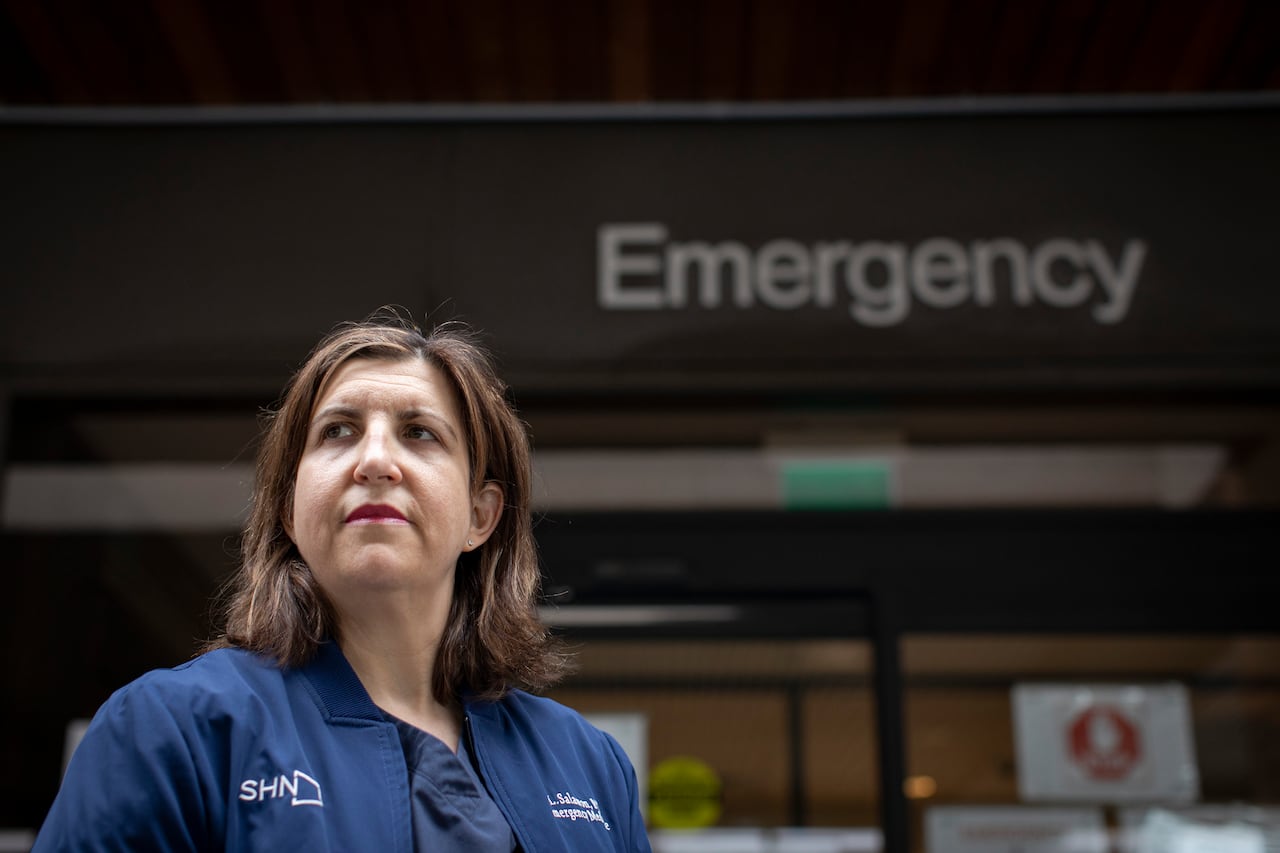
IT'S NOT JUST COVID ANYMORE, OR A TRIPLE-DEMIC. WELCOME TO THE 'NEW NORM' OF SEASONAL ILLNESSES
It's another busy fall in Canadian hospitals, with emergency department closures, long wait times, and ongoing staff shortages all making headlines.
The situation can turn deadly: Two people died while waiting for care at the Anna-Laberge hospital in Châteauguay, Que., just last week.
And as health-care teams remain dangerously overstretched, they're also grappling with the pressure of what some physicians are calling a "new norm" for seasonal illnesses — a range of viral and bacterial infections all back in circulation, with COVID-19 still chief among them.
"This is probably the first year since COVID started where we are seeing the anticipated viruses, the anticipated escalation of volumes, that we saw before we were faced with a pandemic," warned Dr. Laurie Plotnick, medical director of the emergency department at the Montreal Children's Hospital, where the average occupancy rate was close to 160 per cent throughout much of November.
Two pediatric facilities in Montreal held a joint news conference on Wednesday to hammer home the challenges ahead, while urging families to rely on community-based clinics rather than overflowing emergency departments whenever possible.
Children are coming in with an array of ailments, from fevers to bronchitis to pneumonia, officials said. Those high volumes add pressure at a time when hospitals are short-staffed on their inpatient units, leaving few beds available when children need to be hospitalized on the wards.
Lack of primary care providers
But telling families to avoid emergency rooms and seek care elsewhere may be a tough pill to swallow. Plenty of children simply don't have family physicians, Plotnick noted.
It's a Canada-wide problem: Data shows millions of Canadians don't have a regular health-care provider, while a new report from Ontario's acting auditor general suggests in that province, one in five patients who visited emergency departments were only there because they lack a family doctor.
Meanwhile emergency departments from Alberta to Ontario to Quebec are reporting hours-long wait times in the face of those ongoing pressures.
Against that backdrop, federal data shows the country's respiratory virus season is well underway, adding fuel to the fire.
Respiratory syncytial virus (RSV) activity is rising and above expected levels, and flu activity is increasing as well.
COVID, meanwhile, is still circulating widely.
From Nov. 21 to 28, the number of COVID-19 patients in hospital increased, the latest national figures show. Public Health Ontario's respiratory virus dashboard currently shows 20 per cent test positivity for COVID, far higher than any other viral threat.
"On top of an already elevated baseline, now we're seeing all of the usual fall respiratory illnesses coming in, plus COVID, which never existed four years ago," Dr. Lisa Salamon, an emergency physician in Toronto, told CBC News.
"That's making a situation that's always bad in the fall even worse. I think we have to get used to this new norm."
Pneumonia makes a comeback
Multiple countries are also reporting unusual upticks in mycoplasma pneumoniae, which causes a bacterial infection commonly known as "walking pneumonia" that's typically a milder form of the disease.
Parts of the U.S., China, Denmark, and several other European countries are all reporting higher levels of pneumonia infections, while South Korean health officials announced hospitalizations for the illness have doubled in the last month, mostly among children.
"Could it be going on in Canada? The answer is, almost certainly," said Dr. Donald Vinh, an infectious diseases specialist with McGill University.
"There's nothing special about our borders, that's for sure, but it's tough to know because you need an active surveillance program to know what's going on. And if there's no surveillance program, either at the provincial or national levels, it could very well be in our backyard — and we don't know."
While there is no formal laboratory-based monitoring happening here in Canada, public health laboratories will be on the lookout for any unusual mycoplasma pneumonia activity, the Public Health Agency of Canada told CBC News.
Medical experts say this bacteria typically rears its head every few years, with this season potentially worse than usual because of a lack of exposure to this pathogen throughout the pandemic, much like how RSV surged last year following the lifting of COVID-related restrictions.
"Immunity to mycoplasma may have fallen, because many people may not have been exposed to it during times of social distancing," explained Dr. Amesh Adalja, a senior scholar at the Johns Hopkins Center for Health Security.
"And now, people are interacting normally again, so we see mycoplasma coming back. And that's kind of synergizing with the natural cycles that this bacteria has as well."
System-level solutions needed
Though it's clear a slate of infectious diseases is putting pressure on hospitals, Salamon said clinicians are hopeful that various seasonal illnesses will surge at different times. COVID seems to be spiking this fall, she said, while flu season hasn't quite taken off.
But there's a downside to that possibility: The potential for another long, drawn-out respiratory virus season that strains the health-care system for months on end.
There is no quick fix, but Salamon said there need to be system-level solutions from policymakers and government officials to prevent deaths and ease overcrowding — both this year, and in the years to come.
Adalja said the current situation isn't surprising, given that respiratory infections were always a challenge in the winter, with COVID now firmly in that mix.
"This is sort of going to be the new norm going forward that we're going to have this level of infection," Adalja said.
2023-12-08T09:03:11Z dg43tfdfdgfd










